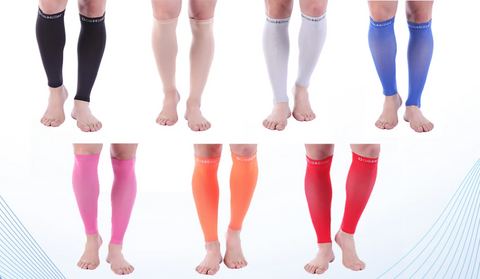Best Compression Socks for Nurses
Nurses have one of the most challenging jobs today. Long hours on their feet often lead to sore feet and aching legs after a shift. Wearing compression socks for nurses can help reduce these symptoms, as there are several factors that directly contribute to the discomfort.
Watch Out For These Symptoms
One of the main challenges nurses face is walking for hours with little to no rest breaks. This can be very detrimental to foot and leg health during a 12-hour shift or longer. Wearing compression socks for nurses can provide much-needed support, helping to reduce swelling and discomfort caused by prolonged standing or walking.
Merely walking around the ward, checking on patients all day can strain the limbs. There is so much pressure put on nurses today that it is very hard for them to find the time to sit down. Even taking a bathroom break can be challenging.

Another reason you may be experiencing pain in the legs, which may not be so evident, is long periods of standing. Just standing still for several hours, like during surgeries, can build up uncomfortable amounts of pressure in the ankles and feet.
Other problems faced by nurses are lack of sleep, musculoskeletal injuries - such as the slipped disc due to regularly lifting and moving heavy equipment and patients, and also wearing the wrong shoes to work.
Luckily, Doc Miller’s Compression Healing Technology is designed to relieve these issues. Explore our compression socks and give your legs the care and comfort they deserve.
Here's What You Can Do
Experts on this subject matter suggest that it is necessary to find a quiet place to sit down during breaks where you won’t be disturbed by patients. Speak to your supervisor to help schedule a proper break time. In the long run, it will be harmful to your health if you do not take regular breaks throughout the workday.
Do leg stretching or mini exercises, whenever possible, to help ease the stress level. Though it is very difficult to find time to work out, one may consider changing their schedule to fit into their busy routine. Some exercises that you may consider doing during the workday are, among other things, rolling your ankles in a circular motion, standing on the balls of your feet, and giving yourself a short massage.
Incorporating proper lifting techniques can help to avoid straining the back, as well as prevent leg problems when carrying patients or medical equipment.
Another major cause of aching legs is improper footwear. A nurse requires shoes that have reliable support, efficient slip-resistant and comfortable insoles. Also, the nurse should look into the benefits of using compression socks in their daily routine at the hospital.
Some of the benefits of using compression socks in the medical field include reduced soreness, improved blood circulation and oxygen flow in the body, and reduced leg swelling.
Some people may think that soreness is just a part of the nursing course, but why endure the pain when you can find a way to alleviate or even prevent any physical discomfort?
The Power Of Compression Socks
Compression sleeves and socks help increase blood circulation, which also helps with the removal of lactic acid build up in the muscles after rigorous activities. Swollen legs and feet are almost always guaranteed to arise from working a 12-hour plus shift.
Varicose veins are the effect of standing for extended periods of time because blood is allowed to pool in the legs, fighting against gravity, causing the veins to enlarge in the lower extremities. Watch this quick video to learn about the early symptoms.
Spider veins are clusters of tiny blood vessels that appear just below the surface of the skin and can be very uncomfortable and awkward. Compression socks relieve symptoms and slow the development of spider and varicose veins. Compression socks give the legs a constant, tight hug during a long shift which keeps the legs looking and feeling fantastic, because your legs deserve it after a long and tiring day at work.
In order to find the best type of compression socks for yourself, there are several things to consider. Compression socks can be made with a variety of materials which serve different purposes. Some of those materials include, but are not limited to: cotton, elastane, lycra, nylon, polyamide, polypropylene, rubber, spandex and wool.
Furthermore, most of the compression socks manufacturers use a different combination of the materials. These combinations can alter the primary usage of compression socks. Compression socks also vary in compression levels or tightness.
If you want to choose the best compression socks for you, browse our collections here.
The casual walker will use a compression level that will differ from the person who wears compression socks to improve blood flow or assist in the recovery of specific venous disorders.
Socks and sleeves with compression levels higher than 20 mmHg are recommended to be worn after consulting with a trained physician. Some manufacturers have gone even further to incorporate a better form-fitting compression socks by providing different levels of compression throughout the whole sock. These types of compression socks are specially made to treat specific cases to better fit the user and their needs.
With regards to which is the best compression socks for you, it is important to choose a particular compression sock that will improve your condition with the least amount of compression levels. Going too tight with the compression level required to treat a specific condition may potentially affect the blood circulation.
To get a better idea of which compression socks are best for a particular situation or condition, it is best to have a specialist examine your condition to make sure that you are looking for the proper compression suited to your needs.
Disclaimer: This article should not be construed as medical advice. Please contact a licensed physician for a proper diagnosis of your specific case.

